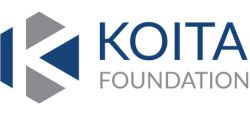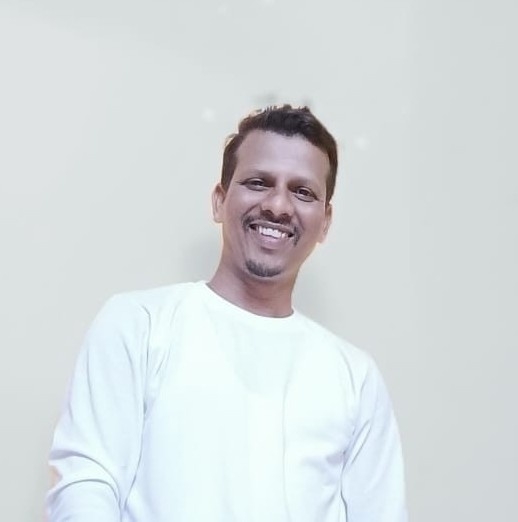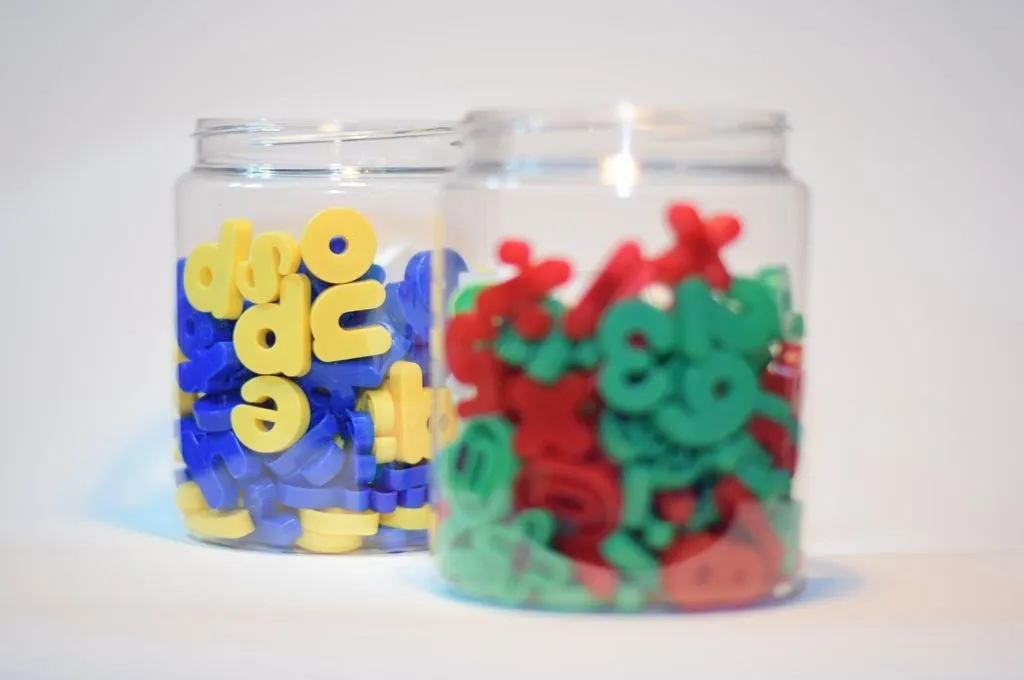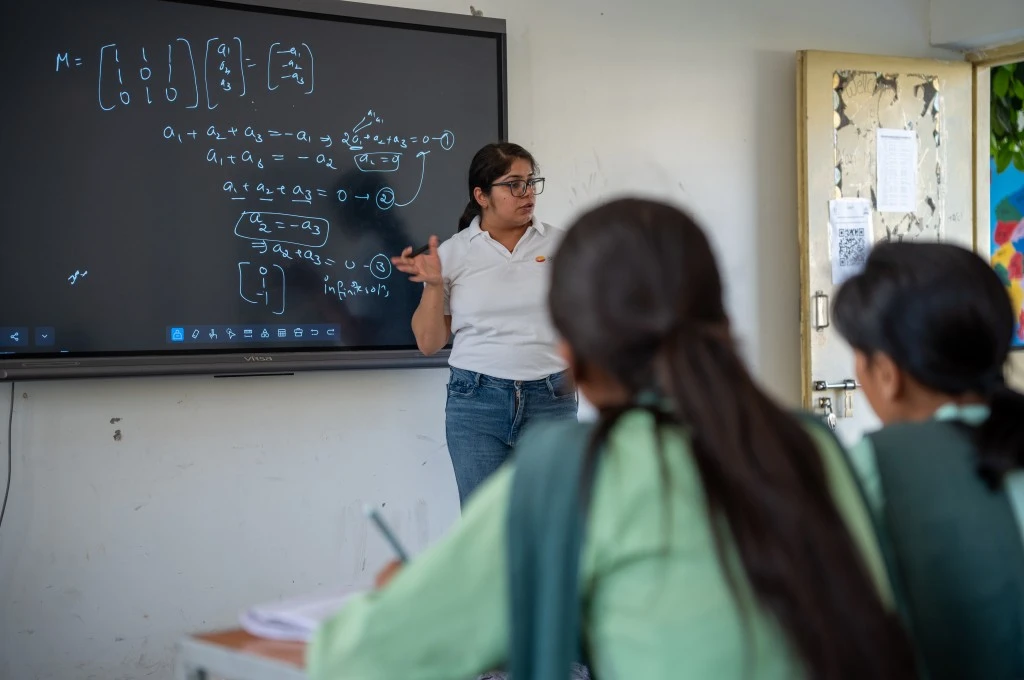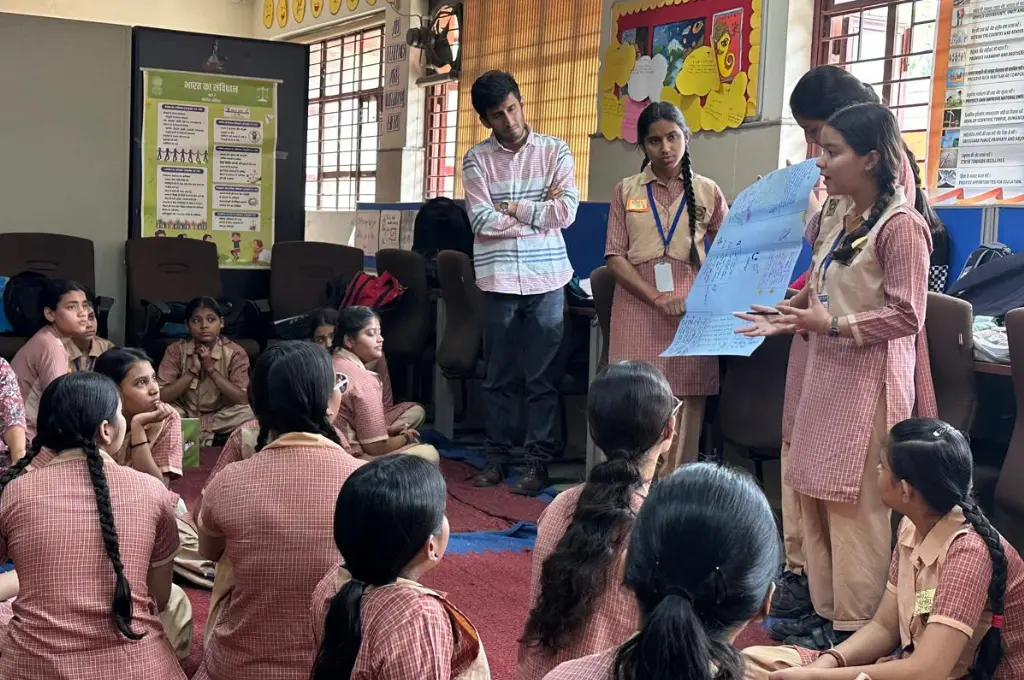माझे नाव केतन तांबे आहे आणि मी एक शिक्षक प्रशिक्षक आहे. सी. ई. क्यू. यू. ई. (CEQUE) ही ग्रामीण गरीबांसाठी दर्जेदार शिक्षण मिळण्यातील अडचणी दूर व्हाव्यात यासाठी सरकारी शाळेतील शिक्षकांचे कौशल्य वाढवण्यासाठी काम करणारी संस्था आहे. माझा जन्म महाराष्ट्रातील रत्नागिरी जिल्ह्यातील काशेळी या गावात झाला. सध्या मी, माझी पत्नी, मुलगी आणि आई सोबत विरार, मुंबई येथे राहतो. मी 2020 मध्ये संस्थेत रुजू झालो, परंतु मी गेल्या 10 वर्षांपासून शिक्षण क्षेत्रात काम करत आहे.
मी किशोरवयीन असताना माझी बहीण आमच्या स्थानिक जिल्हा परिषद शाळेत शिकवत असे. मी अनेकदा तिच्या वर्गात बसत असे आणि तिने केलेल्या कामाबद्दल मला खूप आदर वाटत असे. याव्यतिरिक्त, वारंवार कमी कर्मचारी असलेल्या सार्वजनिक शाळेत वर्गातील हुशार विद्यार्थी म्हणून, शिक्षक उपलब्ध नसताना वर्ग व्यवस्थापनाची जबाबदारी मला अनेकदा देण्यात आली होती. या अनुभवांमुळे माझ्यात शिक्षण क्षेत्रात काम करण्याची तीव्र इच्छा निर्माण झाली. त्यानंतर मी शिक्षणात माझी पदवी पूर्ण केली, मुंबईत राहायला गेलो आणि नंतर मुंबईत आदिवासी समाजातील मुलांसोबत काम करणाऱ्या डोअर स्टेप शाळा या उपक्रमात समुदाय समन्वयकाची भूमिका स्वीकारली. सी. ई. क्यू. यू. ई. मध्ये सामील होण्यापूर्वी, मी मुलांना उपचारात्मक शिक्षण देणाऱ्या एका संस्थेसोबतही काम केले.
सी. ई. क्यू. यू. ई. मधील माझ्या कामाचा एक भाग म्हणून, मी सरकारी शाळांमधील पहिली ते पाचवी इयत्तेला शिकवणाऱ्या शिक्षकांना अभिप्राय देण्यासाठी वर्ग निरीक्षणे आयोजित करतो. सध्या मी महाराष्ट्रातील पालघर जिल्ह्यातील सरकारी शाळांमध्ये 48 शिक्षकांसोबत काम करत आहे. 2022 पासून माझे बहुतांश काम ‘सीखे सिखाये’ या ऍपच्या माध्यमातून मी करत आहे. हे वापरकर्त्यांना (प्रशिक्षकांना) केवळ वर्ग निरीक्षण सत्रांसाठी भेटींचे वेळापत्रक ठरवण्यापुरतीच मदत करत नाही, तर शिक्षकाला भेट देऊन किती काळ झाला आहे, त्यांना किती तासांचे प्रशिक्षण मिळाले आहे आणि मागील भेटीदरम्यान त्यांच्याशी सामायिक केलेल्या सुधारणांसाठीच्या सूचना यासारखे डेटा पॉईंट्स देखील प्रदान करते.
सकाळी 6.00: माझ्या पत्नीची नोकरी लवकर सुरू होते, म्हणून ती माझ्या अगोदर जागी होते, आमचे जेवण (पोळी आणि भाजी) ती तयार करते आणि घरातून आधी बाहेर पडते. जेव्हा मी उठतो, तेव्हा मी कुकरमध्ये थोडा भात बनवतो आणि माझ्या मुलीला उठवतो. त्यानंतर मी तिला तिच्या सकाळच्या कामात मदत करतो, तिला भरवतो आणि आंघोळ घालतो. मी जाण्यापूर्वी, मी माझ्या दिवसाचे वेळापत्रक बघून घेतो. ज्यांना भेटायचे आहे अशा शिक्षकांनाही मी माझ्या भेटीची माहिती देण्यासाठी आणि वर्ग निरीक्षण सत्रासाठी त्यांच्या उपलब्धतेची खात्री करण्यासाठी फोन करतो.
माझी आई आता वयस्कर झाली आहे आणि माझी मुलगी फक्त 18 महिन्यांची आहे. मी आणि माझी पत्नी दोघेही काम करत असल्याने, मी त्यांना माझ्या जवळच्या बहिणीच्या घरी सोडतो आणि दिवसा ती माझ्या मुलीची काळजी घेते.
सकाळी 8.00: मी विरार स्थानकाकडे जातो. मला पालघरमध्ये ज्या शाळांमध्ये जायचे असते, तिथे पोहोचण्यासाठी मी सहसा रेल्वे आणि नंतर रिक्षा घेतो. सकाळी गाड्यांमध्ये इतकी गर्दी असते की मला दाराजवळ उभे राहावे लागते. कारण जर मी डब्यात खूप आत अडकलो तर माझे स्थानक चुकण्याची शक्यता असते.
माझ्या प्रवासादरम्यान, त्या दिवशी मी ज्या शिक्षकांना भेट देणार आहे त्यांच्या माहितीचा आढावा घेण्यासाठी मी ऍप वापरतो. उदाहरणार्थ, आज माझी पहिली भेट आगरवाडी येथील जिल्हा परिषद शाळेतील एका शिक्षकां बरोबर आहे, ज्यांना मी सुमारे पाच आठवड्यांपूर्वी भेट दिली होती.मागील भेटीत मी त्यांना दिलेल्या सुधारणां साठीचे गुण, अभिप्राय आणि सूचना मी पाहतो. या माहिती मुळे शिक्षकांच्या गरजांनुसार मला माझ्या प्रशिक्षणाची रूपरेषा तयार करण्यास मदत होते.
सकाळी 10.00: जेव्हा मी शाळेत पोहोचतो, तेव्हा मी शिक्षकांशी बोलतो आणि त्यांना सत्राची तयारी करण्यासाठी थोडा वेळ देतो.निरीक्षणादरम्यान नोंदी घेण्यासाठी मी त्यांची संमती देखील मागतो. तथापि, जर ते चिंताग्रस्त किंवा घाबरलेले दिसत असतील तर मी फक्त मनातल्या मनात नोंदी करतो. विद्यार्थ्यांच्या बसण्याची व्यवस्था आणि शिक्षक फळ्यावर पाठाचे नाव किंवा तारीख लिहितात की नाही यासारख्या सूक्ष्म बाबी वर्ग निरीक्षणादरम्यान मी प्रथम पाहतो. त्यानंतर मी वर्गातील वातावरणाचे, शिक्षकांकडून शिकवण्याच्या साहित्याचा वापर आणि तासा दरम्यान ते विद्यार्थ्यांशी किती मिळून मिसळून असतात याचे मूल्यांकन करतो.
सकाळी 10.30: वर्ग संपल्यानंतर लगेचच, मी त्यांच्या शिकवण्याच्या पद्धतीवर अभिप्राय देण्यासाठी शिक्षकांसोबत बसतो. त्यांच्या शिकवण्यात ‘वाईट’ किंवा ‘चांगले’ काय आहे याचा निर्णय देण्याऐवजी, मी प्रथम शिक्षकांना त्यांनी काय चांगले केले असे त्यांना वाटते यावर चिंतन करण्यास सांगतो. त्यानंतर, मी माझे स्वतःचे मूल्यांकन सादर करतो, प्रामुख्याने सकारात्मक पैलूंवर लक्ष केंद्रित करतो. उदाहरणार्थ, ज्या विद्यार्थ्याने प्रश्नाचे चुकीचे उत्तर दिले आहे, त्याला योग्य उत्तर मिळवण्यात मदत करताना शिक्षक त्याला मदत कशी करू शकतात, हे मी लक्षात घेतो.
त्यानंतर मी ज्या क्षेत्रांमध्ये सुधारणेला वाव आहे त्यावर माझे विचार मांडतो. बऱ्याचदा, या अभिप्रायाबरोबर ऍपवरून दाखवायचे व्हिडिओ असतात जे विशिष्ट सल्ला देतात. परिणामी आता, शिक्षकांकडे अशी संसाधने आहेत जी ते त्यांच्या तासाबाबतचे अभिप्राय समाविष्ट करताना पुन्हा पाहू शकतात. शिक्षणाच्या विशिष्ट पैलूंवरील शिफारशींसाठी शिक्षक माझ्याशी संपर्क साधतात अणि त्यासाठी सुद्धा हे व्हिडिओ उपयुक्त ठरतात. उदाहरणार्थ, एका शिक्षकाने अलीकडेच नोंदवले की उपस्थिती दिनचर्येवरील व्हिडिओ पाहण्याने त्यांना वर्गात उपस्थिती घेण्याची पद्धत सुधारण्यास मदत झाली.
शिक्षकांबरोबरच्या माझ्या सत्रानंतर, मी ऍपच्या माध्यमातून त्यांना अभिप्राय असलेली लिंक देतो. यामुळे शिक्षक प्रशिक्षक म्हणून माझ्या बद्दल त्यांचा अभिप्राय देऊ शकतात. जाण्यापूर्वी, मी त्यांना, मी केलेल्या कोणत्याही सूचना त्यांच्या शिक्षणात लागू करण्यासाठी प्रोत्साहित करतो आणि त्यांना सांगतो की मी 15-20 दिवसात दुसर्या सत्रासाठी परत येईन.
दुपारी 12.00: प्रत्येक शाळेत एक केंद्रप्रमुख असतो, जो त्या शाळेतील शिक्षकांच्या निरीक्षणावर देखरेख ठेवण्याची जबाबदारी असलेला सरकारी प्रतिनिधी असतो. शिक्षकांबरोबरचे सत्र पूर्ण केल्यानंतर, मी अनेकदा शाळेच्या केंद्रप्रमुखांना भेटतो आणि त्यांना शिक्षकांच्या प्रगतीची माहिती देतो आणि त्यांच्या हाताखाली असलेल्या इतर शिक्षकांच्या प्रश्नांची उत्तरे देतो.
एकदा माझे सत्र संपल्यानंतर, मी पुढील कोणत्या शाळेला भेट देणार आहे हे पाहण्यासाठी मी ऍप तपासतो. मी पालघरमध्ये कार्यरत असलेले पाच समूह बऱ्यापैकी पसरलेले आहेत. जेव्हा मला एका शाळेतून दुसऱ्या शाळेत जाण्यासाठी रिक्षा सापडत नाही, तेव्हा मी चालतच जाणे निवडतो. यासाठी मला 45 मिनिटे ते एक तासापर्यंतचा वेळ लागतो.
असे ही काही वेळा झाले आहे की मी ज्यांच्या बरोबर काम करणार आहे ते शिक्षक भेटीच्या दिवशी अचानक अनुपलब्ध होतात. अशा परिस्थितीत, मी एका वेगळ्या शिक्षकाशी अनियोजित भेटीचे आयोजन करण्याचा प्रयत्न करतो. यात ऍपचा वापर करून मी ताबडतोब भेटू शकेन असे शिक्षक निश्र्चीत करणे, त्यांची उपलब्धता तपासणे आणि माझ्या जिल्हा व्यवस्थापकांना त्यांच्याबरोबर सत्र नियोजित करण्याची विनंती करणे इत्यादी कामे केली जातात.
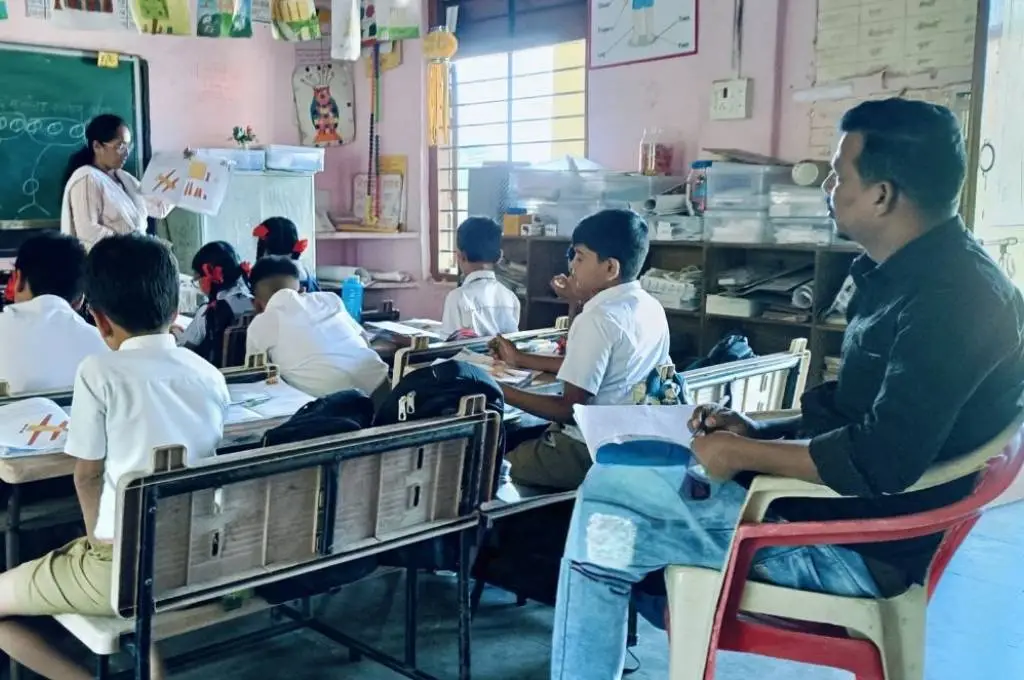
दुपारी 1.00: त्यानंतरच्या सत्रांमध्ये मी याच प्रक्रियेची पुनरावृत्ती करतो. शाळांमधील प्रवास वेळखाऊ असला तरी, एका सत्रातून दुसऱ्या सत्रात जाणे या ऍपमुळे तुलनेने सोपे आहे.जेव्हा मी पहिल्यांदा शिक्षक प्रशिक्षक म्हणून सी. ई. क्यू. यू. ई. मध्ये सामील झालो, तेव्हा हे ऍप अजूनही विकसित होत होते.आम्हा प्रशिक्षकांना प्रत्येक सत्र एक्सेल शीटवर लॉग इन करावे लागत होते, जी एक अवघड प्रक्रिया होती आणि ती केवळ आमच्या लॅपटॉपवर केली जाऊ शकत होती. आता आपल्या फोनवरील विविध डेटा पॉईंट्स पर्यंत पोहोच आहे. आम्हाला माहित आहे की आम्ही शिक्षकांना शेवटचे भेटून किती काळ झाला आहे आणि त्यांना किती तासांचे प्रशिक्षण मिळाले आहे. या आकडेवारीच्या आधारावर, जिल्हा व्यवस्थापक आणि शिक्षक प्रशिक्षक एकत्रितपणे भविष्यातील भेटींसाठी वेळापत्रक तयार करतात.
या डेटा पॉईंट्सच्या उपलब्धतेमुळे आम्हाला आमच्या भेटींच्या वेळा ठरवणे आणि विशिष्ट शिक्षकांच्या कामगिरीच्या संदर्भात सरकारी अधिकाऱ्यांकडून विचारलेल्या संभाव्य प्रश्नांना उत्तरे देणे शक्य झाले आहे. ऍप वापरण्यापूर्वी, आम्ही अशा गतीने व नेमकेपणाने ही माहिती प्रदान करू शकत नव्हतो. शेवटी, आपल्या माहितीची स्पष्टता आणि अचूकता हे आपण सकारात्मक दृष्टीकोनातून करत असलेले कार्य प्रतिबिंबित करते.
दुपारी 4.00: मी एका दिवशी तीन शाळांना भेट देतो, पण आज आठवड्याचा शेवट असल्याने माझे वेळापत्रक थोडे वेगळे आहे.शुक्रवारी दुपारी मी सी. ई. क्यू. यू. ई. च्या पालघर येथील जिल्हा कार्यालयात जातो. जिल्ह्यातील माझे सहकारी प्रशिक्षक आणि मी जिल्हा व्यवस्थापकांना भेटण्यासाठी जातो. आम्ही काम करत असलेल्या शाळांमधील आमच्या अनुभवांवर चर्चा करण्यासाठी किंवा आम्हाला आलेले गमतीदार अनुभव एकमेकांना सांगण्यासाठी आम्ही एकत्र जमतो. बऱ्याचदा, आमच्यापैकी एकाला किंवा अनेकांना शाळेत भेडसावणाऱ्या समस्यांवर चर्चा करतो आणि एकत्रितपणे उपाय शोधतो. अलीकडेच, यापैकी एका बैठकीत, आमच्या सत्रादरम्यान मी शिकवण्याच्या काही पैलूंबद्दल सकारात्मकपणे बोलल्यानंतर एक शिक्षिका कशी भावुक झाली हे मला आठवले. तिने नमूद केले की तिच्या 15 वर्षांच्या कारकिर्दीत, ती जे चांगले करत होती त्यापेक्षा काय सुधारावे हेच तिला सांगितले गेले होते. यामुळे हळूहळू एक शिक्षिका म्हणून तिच्या क्षमतेवरील तिचा विश्वास कमी झाला होता. मात्र, आमचे सत्र तिच्यासाठी एक स्वागतार्ह बदल होता. बैठकीतील या गोष्टीमुळे इतर प्रशिक्षकांना शिक्षकांशी बोलताना सकारात्मक प्रतिसादासह नेतृत्व करण्याचे मूल्य समजवण्यास मदत झाली.
आम्ही या चर्चांना खरोखरच महत्त्व देतो, कारण आम्ही एकमेकांच्या अनुभवांमधून आणि आमच्या सत्रांमध्ये आपल्याला भेडसावणाऱ्या सामान्य आव्हानांमधून बरेच काही शिकू शकलो आहोत.
सायंकाळी 5.00: पालघरहून घरी परतण्यासाठी मला सहसा दोन तासांचा रेल्वे प्रवास करावा लागतो. या काळात, मी दिवसभर घेतलेल्या कच्च्या नोंदी ऍपवर योग्य पद्धतीने भरण्याचे काम करतो. या साठी आपल्याला वर्गातील सहभाग, शिक्षकांचा फळ्याचा वापर आणि त्यांच्या पाठ वितरणाची व्यापकता यासारखी निरीश्क्षणे भरणे आवश्यक आसते. या प्रत्येक निकषांच्या व मी केलेल्या माझ्या मूल्यांकनाच्या आधारे, ते ऍप शिक्षकांसाठी मूल्यांकन करते. हे मूल्यांकन मी ऍपमध्ये भरतो. माझी पत्नी माझ्यापेक्षा उशिरा घरी येते, म्हणून मी परत येताना माझ्या बहिणीच्या घरातून माझ्या मुलीला आणि आईला घेऊन जातो.
सायंकाळी 7.00: घरी पोहोचल्यानंतर, दिवसाचे काम संपण्यापूर्वी मला आणखी काही कामे पूर्ण करायची असतात. प्रथम, मी त्या दिवशी एखाद्या केंद्रप्रमुखाला भेटलो की नाही हे नोंदवतो आणि तसे असल्यास, आम्ही काय चर्चा केली ते मी नोंदवतो.त्यानंतर, मी ज्या शिक्षकांना भेटलो त्यांनी माझ्या सत्रावरील अभिप्राय भरला आहे का ते मी तपासतो. जर त्यांनी तसे केले नसेल, तर अभिप्राय भरण्याची मी त्यांना आठवण करून देतो. शेवटी, मी दिवसभर पूर्ण केलेल्या सत्रांची माहिती देण्यासाठी माझ्या जिल्हा व्यवस्थापकाला फोन करतो. एकदा ऍपने सर्व्हरशी समन्वय साधल्यानंतर, दिवसाचे काम पूर्ण होते.
तथापि, मला अजूनही ऍपच्या आधीचा एक काळ आठवतो जेव्हा हे तपशील एक्सेल शीटवर भरावे लागत होते. घरी परतल्यानंतर मी माझ्या लॅपटॉपवर अनेक तास घालवत असे, प्रत्येक सत्र अचूकपणे लॉग इन केलेले आहे की नाही आणि दुसऱ्या दिवशी मला कोणत्या शाळांना भेट द्यायची आहे हे मला माहित आहे का? याची खात्री करून घेत असे. त्याचप्रमाणे, आम्ही लॉग इन केलेल्या भेटींच्या आधारे पुढील कोणत्या भेटी नियोजित करायच्या हे ठरवण्यात आमचे जिल्हा व्यवस्थापक देखील बराच वेळ घालवत असत.
ही संपूर्ण प्रक्रिया अधिक कष्टाची आणि वेळखाऊ वाटायची, आज आहे त्यापेक्षा खूप जास्त.
सायंकाळी 8.00: माझी पत्नी घरी येण्यापूर्वी, मी साफसफाई आणि कपडे धुणे यासारखी काही घरगुती कामे पूर्ण करतो. मी माझ्या मुलीला नाश्ता देखील देतो, रात्रीच्या जेवणासाठी भाज्या चिरतो आणि माझ्या पत्नीसाठी थोडा चहा करतो. एकदा माझी पत्नी आली आणि तिचा चहा घेवून झाला, की मग ती आमच्यासाठी रात्रीचे जेवण बनवायला सुरुवात करते.
जेव्हा मला मोकळा वेळ मिळतो, तेव्हा मला तो माझ्या कुटुंबासमवेत घालवायला आवडतो. मला माझ्या मुलीसोबत खेळायला आणि तिच्याबरोबर नवीन ठिकाणांना भेट द्यायला आवडते.अन्यथा, मी माझ्या घरात कुठेतरी वाचन करत भसतो.
मी बऱ्याच काळापासून शिक्षण क्षेत्रात काम करत आहे आणि माझ्या कार्यकाळात मी लक्षणीय बदल पाहिले आहेत.मी सद्ध्या शिक्षकांसोबत काम करत असलो तरी मुलांना स्वतः शिकवणे हे माझे ध्येय आहे. यासाठी मी केंद्रीय शिक्षक पात्रता परीक्षा (सी. टी. ई. टी.) आणि महाराष्ट्र शिक्षक पात्रता परीक्षा उत्तीर्ण झालो आहे. मला मिळालेल्या संधींचा उपयोग मी ज्या मुलांबरोबर काम करतो त्यांना माझे ज्ञान अर्थपूर्ण पद्धतीने देण्यासाठी आणि मुलांच्या एका पिढीला स्वतः शिक्षक होण्यासाठी प्रेरित करण्यासाठी करेन अशी मला आशा आहे.
आय. डी. आर. लासांगितल्याप्रमाणे.
मूळइंग्रजीतील लेखाचा मराठी अनुवाद करताना ट्रांसलेशन टूल चा वापरकेला आहे. सुशील कुमार सडोलीकर यांनी अनुवादीत लेख तपासण्याचे व संपादनाचे काम केले आणि अंकिता भातखंडे यांनी याचे पुनरावलोकन केले आहे.
—
अधिक जाणून घेण्यासाठी
- झारखंडमधील सरकारी शाळांमध्ये मुलांच्या सामाजिक-भावनिक शिक्षणाला पाठिंबा देणारा एक ना-नफा कार्यकर्ता. या बाबत अधिक (या बद्दल).
- अधिक वाचनासाठी हा लेख पहा भारतातील शिक्षक प्रशिक्षण सुधारणांची तातडीची गरज.
